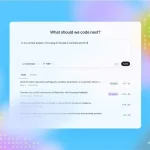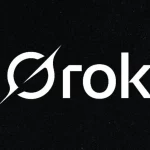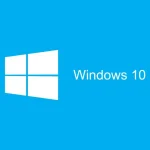OpenAI has introduced its latest innovation—the GPT-4.1 family of models, including GPT-4.1, GPT-4.1 Mini, and GPT-4.1 Nano—aimed at revolutionizing AI development. Launched on April 14, 2025, and announced by CEO Sam Altman on X, these models are available exclusively through OpenAI’s API, offering developers enhanced capabilities in coding, instruction following, and long-context processing.
This release underscores OpenAI’s focus on empowering developers with tools that prioritize real-world utility over benchmark scores. The GPT-4.1 family promises to deliver superior performance at a lower cost, but its API-only rollout has sparked mixed reactions among the tech community.
The GPT-4.1 family is built to handle a wide range of tasks, with each model offering unique strengths. According to OpenAI’s official blog, the flagship GPT-4.1 model features a 1-million-token context window, capable of processing approximately 750,000 words in a single prompt—enough to analyze entire books or maintain extended conversations. It performs well on coding tasks, scoring between 52% and 54.6% on the SWE-bench Verified benchmark, a test that evaluates software engineering capabilities. The model also supports multimodal inputs, meaning it can process text, images, and potentially other data types, making it versatile for various applications.
For developers seeking efficiency, GPT-4.1 Mini and GPT-4.1 Nano offer compelling alternatives. The Mini model excels in intelligence and vision tasks, often outperforming earlier models like GPT-4o in specific use cases. The Nano model, OpenAI’s smallest and fastest, is optimized for lightweight applications, delivering high-speed outputs at a fraction of the cost. Pricing for the family is competitive: GPT-4.1 costs $2 per million input tokens and $8 per million output tokens, Mini is priced at $0.40 per million input tokens and $1.60 per million output tokens, and Nano is the most affordable at $0.10 per million input tokens and $0.40 per million output tokens.
The models shine in coding and instruction following. GPT-4.1 shows a 21% improvement over GPT-4o and a 27% improvement over GPT-4.5 on coding benchmarks, making it a powerful tool for developers working on complex programming tasks. Its ability to follow detailed instructions accurately also makes it ideal for building AI agents that require precise command execution. However, OpenAI notes that the model’s accuracy drops with larger context windows, falling from 84% at 8,000 tokens to 50% at 1 million tokens on the OpenAI-MRCR test, indicating potential challenges in maintaining precision over long contexts.
The API-only availability has been a point of contention. Many users, as reported by ZDNet, expressed disappointment that the models aren’t integrated into ChatGPT, limiting access for non-developers. OpenAI’s decision to focus on developers is strategic, however, as the company aims to compete with rivals like Anthropic and Google. The launch has also sparked a [price war](https://venturebeat.com/ai/gpt-4-1-ai-price-war-developers/) in the AI industry, with OpenAI slashing API prices by up to 75% and offering a 75% caching discount to incentivize prompt reuse. This move could make advanced AI more accessible to smaller teams, especially with platforms like Windsurf providing free trials to test the models.
The GPT-4.1 family sets a new standard for AI development, balancing power and affordability. As developers begin to leverage these models, their impact on the industry will likely reshape how AI applications are built. Share your thoughts on this launch below, and explore more tech updates at technocodex.com







